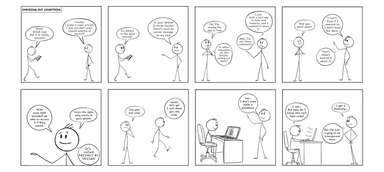The Quiet Revolution in Your Pocket: Local-First Apps.

The powerhouse in your pocket
The cloud is great, but have you noticed? There's a revolution happening.
People are getting tired of their data floating around random servers.
They want control. They want their data on their phones, not someone else's computers.
This has led to the development of a new breed of apps. Apps that are privacy-obsessed and local-first. They're not pinging home every five seconds. They don't need constant internet. No. These apps leverage the immense processing power and storage of your phone.
And when I say immense, I mean it. That device in your pocket? It can do more than scroll and take selfies. It's a powerhouse that would make the tech giants of yester-year green with envy.
The average smartphone today has more raw processing capability than the entire NASA guidance computer that landed astronauts on the moon in 1969. Let that sink in for a moment. We're carrying more computing power in our pockets than what it took to achieve one of humanity's greatest feats.
Yet, somehow, we've become so accustomed to offloading most of our apps' functionality to the cloud that we fail to fully harness the power of the device. This is like having a Ferrari and only using it to drive to your neighborhood local.
Why local-first is amazing
- Privacy is King: Your data stays on your device. No more worrying about hackers or even nosy employees peeking into your personal info.
- Speed: Everything's right there on your phone. No waiting for data to travel halfway across the world and back.
- Works offline: No internet? No problem. It will keep working as long as you got charge.
So what's the catch?
Local-first apps may not always match the functionalities of their internet-dependent counterparts. There are trade-offs:
- Syncing across devices can be tricky.
- Some fancy server-side magic might be off the table.
To address this, apps can adopt a "local-first, cloud-optional" approach. The app's core functionalities are handled locally, but users can choose to connect to cloud services for supplementary features when needed. You get to have your cake and eat it - the privacy and reliability of local processing, with the option to leverage cloud capabilities.
A case study
CountPesa is a prime example of a local-first app designed to maximize the value of local processing and storage. The app syncs with your M-Pesa SMS messages to automatically import and organize your transactions, enabling easy expense tracking and budgeting. All without sending your data to some external server. This approach ensures your financial information remains private and secure while still providing the convenience of powerful expense management.

Local-first, cloud-optional
Building upon the local-first principles of the mobile app, the web version, CountPesa Web, embraces a local-first, cloud-optional approach. Users would want to use it because it has larger screen real estate, allowing for more detailed insights and interactive visualizations.
So how would one go about sharing data between the two platforms?
Here is where cloud-services come in handy. Users can connect their personal Google Drive account to both the mobile and web app. This allows for backing up data and syncing across platforms, with Google Drive acting as a central, user-owned database. It's similar to how we use Google Photos to back up our pictures and access them when switching devices.
On the web app, users could also directly upload M-Pesa statements. But because of the technical limitations of PDF parsing on the browser, the statement has to be parsed server-side. To do this privately, the data is encrypted in transit, parsed and returned for storage and analysis to the local-first web application. No server-side storage, the data is only processed and returned.
These are some examples of how cloud processing can be applied to local-first apps when necessary, addressing potential limitations while maintaining privacy.
The future is in your hands (Literally)
Now, whenever you hold that device in your hands, I want you to think of it as a digital Swiss Army knife, a powerhouse capable of handling serious computations while keeping your data private and secure.
You no longer have to see your data go on a world tour without you. Local-first apps make sure it stays where it belongs - with you.
Sure, the cloud isn't going anywhere. But now you have options. You can choose apps that put you in control, that keep your data as close as your pocket.
So, what are you waiting for? Give local-first apps a try. Download CountPesa. Experience what it's like when your phone truly becomes your personal powerhouse.








Author and Developer